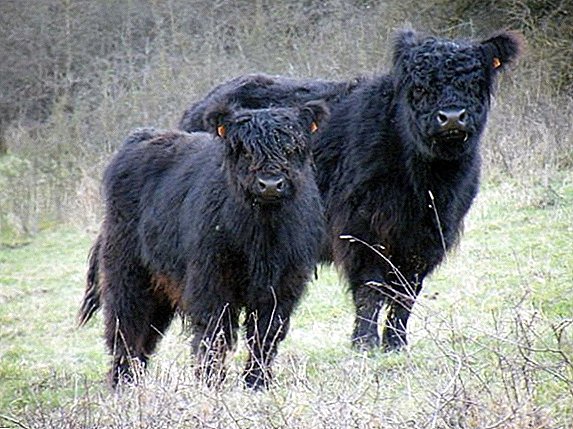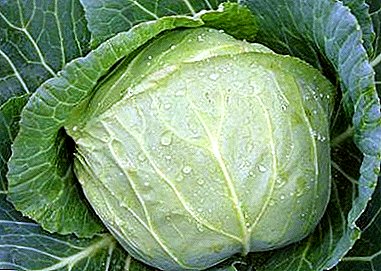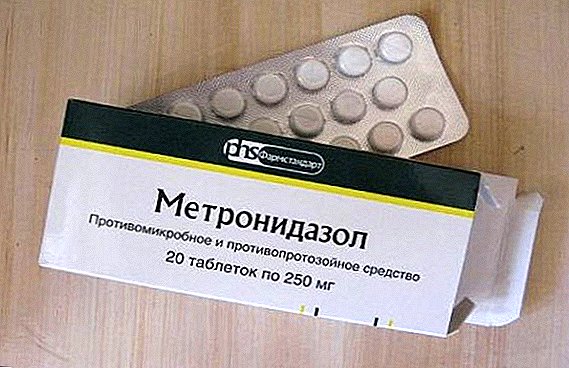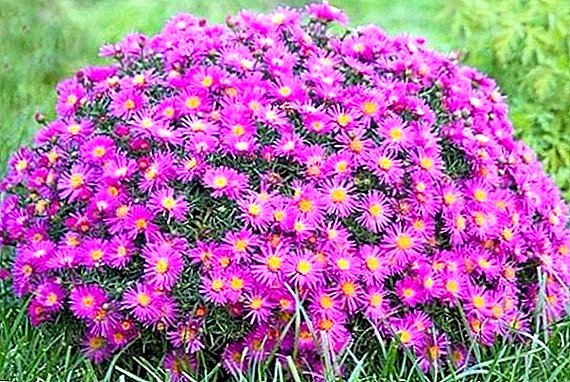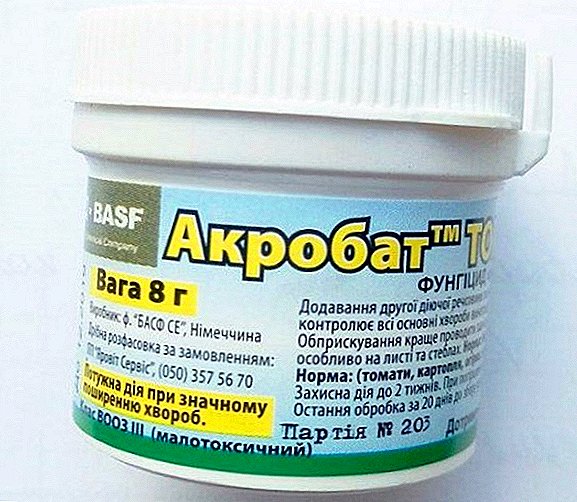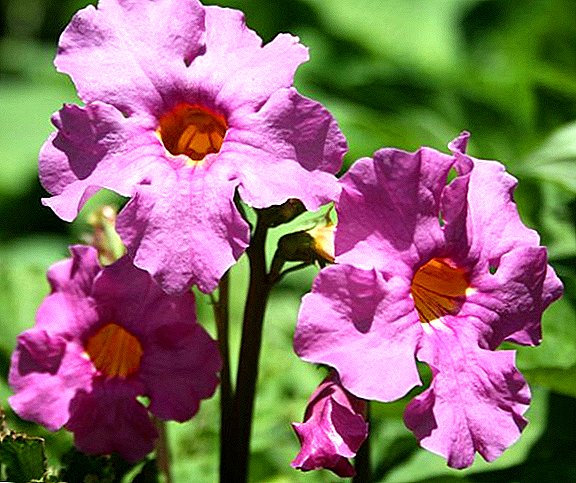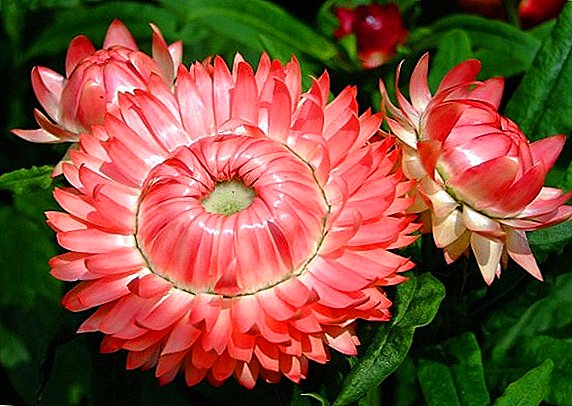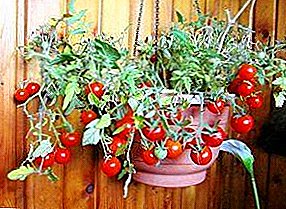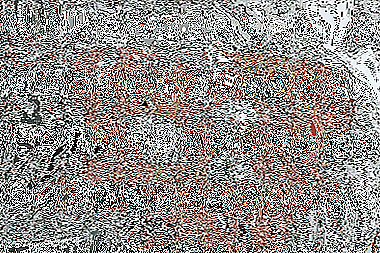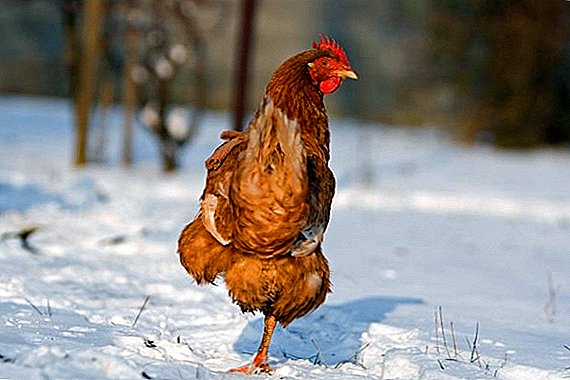 For those who keep chickens on the farm year-round, the question of their safe wintering is very important. In order for all birds to survive the winter cold without damage, it is important for the farmer to create optimal temperature and light conditions, as well as to ensure a full-fledged diet for all members of the flock - more about this in the article.
For those who keep chickens on the farm year-round, the question of their safe wintering is very important. In order for all birds to survive the winter cold without damage, it is important for the farmer to create optimal temperature and light conditions, as well as to ensure a full-fledged diet for all members of the flock - more about this in the article.
What temperature can chickens withstand in winter
In order for the birds to be healthy and strong, they need to provide comfortable conditions both in the hen house and during winter walks.
Did you know? Unlike all other birds, the chicken does not need a special nest. Layers can lay their eggs in any place more or less suitable for this.
In the hen house
The minimum allowable temperature in the house should not be below + 15 ° C. In such conditions, chickens can still lay eggs, but their productivity indicators will be significantly worse than normal. If the temperature falls below not only productivity, but also the health of the hens will suffer greatly.

When can walk
Experts in the field of breeding poultry believe that well-fed and healthy chickens are not afraid of the cold. If all the comfortable conditions are created in the hen-house, they will come out with pleasure and walk, even at a frost of -10 ° C.
Learn how chickens get sick in winter, how to heat a chicken coop with IR lamps, how to feed layers in the winter for egg production, how to equip ventilation in a chicken coop in winter, what are heating options for a chicken coop in winter, how to make a nipple drinker with heating.The main thing is to normalize such walks. It is best to keep the door to the chicken coop ajar so that the birds themselves can determine how long they should go for a walk and when they should return to the warm barn.
It is also important to clean the place for walking from the snow so that the birds do not freeze their paws, make a shelter from precipitation, prevent strong winds and drafts. It would not be superfluous to install a bath with ashes or sand for dry bathing, as well as a small feeder so that the chickens can refresh themselves during the walk.

Optimum temperature for laying hens in winter
In order for the birds to feel comfortable, and their productive indicators were normal, the temperature in the house should be maintained at + 23-24 ° C.
Important! Temperature indicators should be kept at one point throughout the day. Sudden drops are no less dangerous than just low temperature in the house.
Preparing a chicken coop for winter cold
To keep the house temperature at the right level, the room must be properly prepared for the cold. This should be done as soon as the first frost began.
Warming
The first step in the insulation process is the selection of a suitable material. The most common are:
- penoplex;
- Styrofoam;
- mineral wool;
- foil penofol.

The process of insulation itself goes through several stages:
- Warming the floor. The litter layer on the floor can be of various organic materials. Straw, hay, peat, moss, sawdust and wood shavings are used for these purposes: they are best suited for floor insulation, are safe, affordable, and after use can be used as fertilizer on the site. The thickness of the layer should be at least 20 cm. As the material coalesces, 5-10 cm of filler should be added. Full replacement of insulation is carried out at the end of the season.
- Wall insulation Outside walls are insulated with foam blocks, and over with plastic sheets or slate. If the climate of the birds is harsh, then foam blocks can be sheathed inside the room.
- Warming of the roof and ceiling. As for the roof, there are no special requirements. It is important that there are no cracks and breaks in it. If there is an attic above the house, it is advised to lay it with a thick layer of straw.
- Insulation of doors and windows. Doors and windows should not let air through and create drafts. To do this, it is enough to veil them with old, dense bedspreads or blankets (if necessary in several layers).

Additional lighting
Reducing the duration of daylight directly affects the egg production of chickens. If during the cold period of the year there is no additional lighting in the house, the productivity of the birds will be minimal or even zero.
Learn what vitamins chickens need for egg production, how to increase egg production, why chickens peck eggs.
When organizing additional coverage, you must adhere to some important rules:
- To increase the daylight inside the chicken coop, you can use LED, fluorescent or ordinary household incandescent bulbs.
- With excessive lighting, birds become restless and fight more, so it is important not to overdo it in organizing winter lighting. On 10 square meters of the room will be enough one bulb 60 watts.
- The light bulb is best installed under the ceiling in the area with feeders - this will create the most comfortable conditions for chickens.
- It is necessary to turn on the lighting in the morning (at 5-6 hours) and turn it off with the onset of a full day of light. In the evening, as soon as it starts to get dark, you can turn on the lamp again and keep it running until 8-9 in the evening. This process can be greatly facilitated by purchasing a time timer at the hardware store, which itself will turn the lighting on and off according to a predetermined schedule.
Lighting system in the hen house: video
Important! You can not install the lamp directly above the nests, since the bright light will interfere with the hens and will only reduce the egg-laying performance.
Balanced nutrition for laying hens in winter
Proper nutrition in the required amount greatly affects the productive performance of poultry. Therefore, in winter it is important to plan the diet of chickens based on a number of rules:
- In the summer, it is necessary to dry various herbs (nettle, clover, chicken millet), tie the blanks into small bunches and hang them not high above the floor.
- Add to the diet of chicken boiled root vegetables (beets, zucchini, carrots, potatoes, pumpkin).
- Prepare special mixers, which include crushed eggshell, bone or fish meal, bran, sunflower oilcake. Such an additive will provide the birds with all the missing substances.
- As a source of additional protein and calcium in the diet, bloodworms or worms can be added to food.
- In separate tanks in the house should be chalk, small gravel, crushed shells.
- Water for drinking in winter should be heated to room temperature.
How to make feed for layers in the winter: video
Did you know? For the first time, chickens were domesticated about 3 thousand years ago on the territory of modern Ethiopia.
Having created all the necessary conditions in the poultry house, as well as adjusting the poultry ration, you will be able to achieve quite good productive indicators and get high-quality eggs even in the winter period. The main thing is to follow simple and few rules, and then the birds will be healthy and satisfied.
Reviews
I live in the north of Moscow region. To represent those who do not know - a temperature of -25 is quite normal for winter. There are many birds, not only chickens. Of course, I keep valuable breeds in closed pavilions with all the conditions for temperature and other parameters, but I do not limit an ordinary bird in any way. There is a chicken coop, it is worth thermo-automatics, whose task is to keep the temperature on the floor no lower than +5. Everything. 4x5 chicken coop, around the 10mm polycarbonate pavilion. Nearby are just sheds without insulation, just closed from the draft. I never close Lazy, that is, the bird itself goes where it likes.
In winter, chickens rush exclusively in the hen house, although in summer they prefer nests in barns. And some chickens spend the night for some reason in barns, even in cold weather. There is no loss, so probably I will not agree that the bird should always be above zero temperature.
:) Roosters need to be caught, smeared with crests of goose fat so that they do not freeze their beauty.





